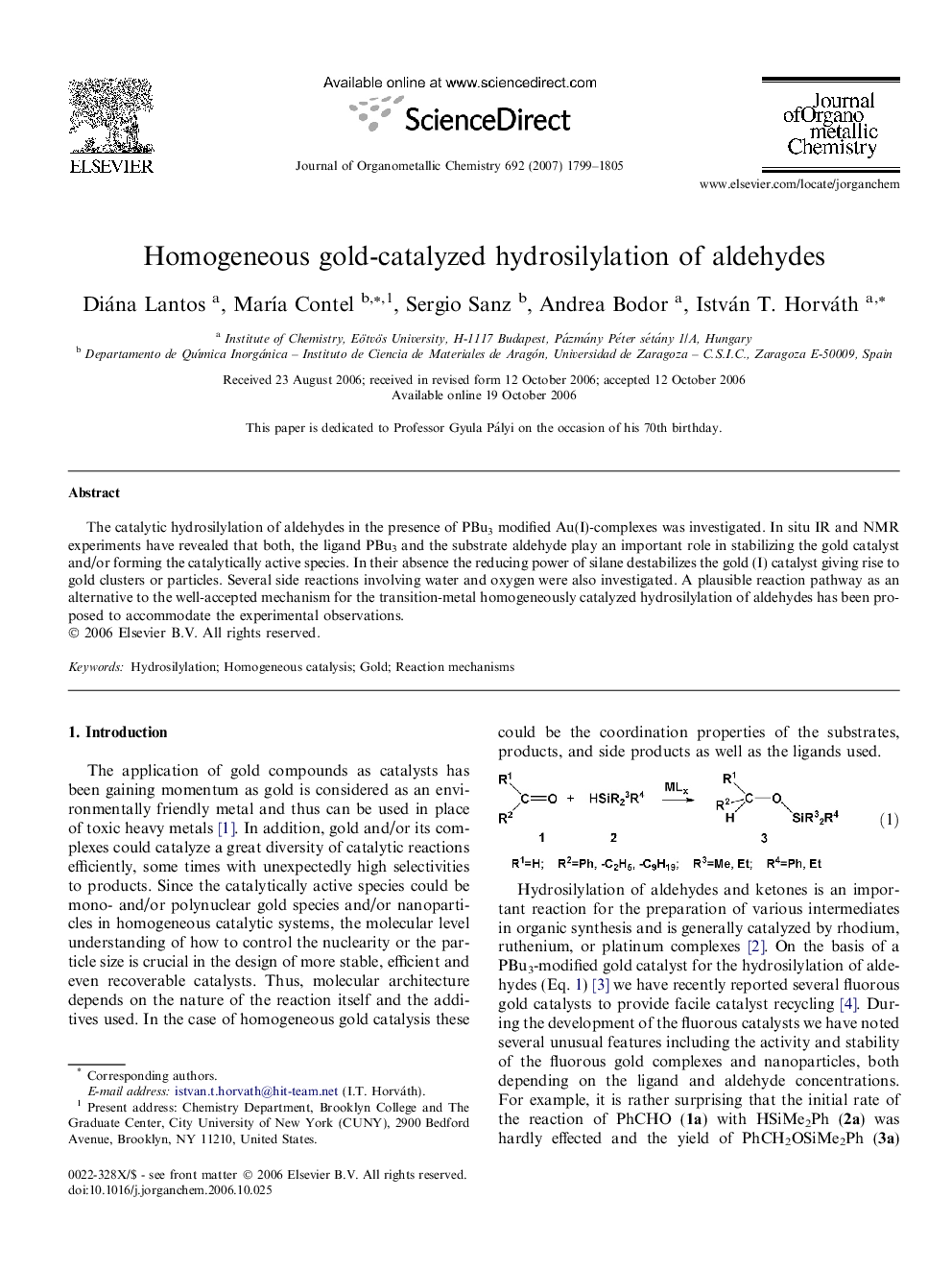| Article ID | Journal | Published Year | Pages | File Type |
|---|---|---|---|---|
| 1328246 | Journal of Organometallic Chemistry | 2007 | 7 Pages |
The catalytic hydrosilylation of aldehydes in the presence of PBu3 modified Au(I)-complexes was investigated. In situ IR and NMR experiments have revealed that both, the ligand PBu3 and the substrate aldehyde play an important role in stabilizing the gold catalyst and/or forming the catalytically active species. In their absence the reducing power of silane destabilizes the gold (I) catalyst giving rise to gold clusters or particles. Several side reactions involving water and oxygen were also investigated. A plausible reaction pathway as an alternative to the well-accepted mechanism for the transition-metal homogeneously catalyzed hydrosilylation of aldehydes has been proposed to accommodate the experimental observations.
Graphical abstractThe catalytic hydrosilylation of aldehydes in the presence of PBu3 modified Au(I)-complexes was investigated. In situ IR and NMR experiments have revealed that both, the ligand PBu3 and the substrate aldehyde play an important role in stabilizing the gold catalyst and/or forming the catalytically active species. In their absence the reducing power of silane destabilizes the gold (I) catalyst giving rise to gold clusters or particles. Several side reactions involving water and oxygen were also investigated. A plausible reaction pathway as an alternative to the well-accepted mechanism for the transition-metal homogeneously catalyzed hydrosilylation of aldehydes has been proposed to accommodate the experimental observations.Figure optionsDownload full-size imageDownload as PowerPoint slide
